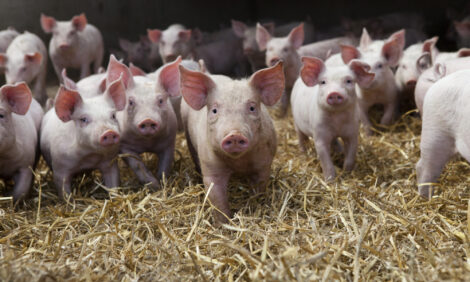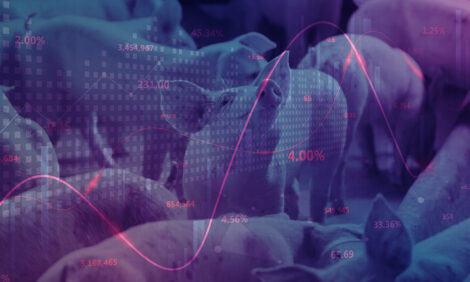



Leman: Principles of ventilation management
Poor ventilation increases disease and reduces pig growth rateEditor's note: The following is from a presentation by Sam Holst, Swine Vet Center, Minnesota, USA, during the 2024 Leman Swine Conference.
Air quality and barn temperature are two of the most critical environmental components that affect pig health and performance. Poor ventilation increases disease and reduces growth rate by creating a barn environment high in humidity and excess gases. An understanding of some fundamental ventilation concepts will help set up a barn environment that optimizes pig health and performance.
Minimum ventilation
Minimum ventilation is the amount of fresh air needed to be brought into the barn to control humidity and gas contaminants. In most barns, the fans assigned to minimum ventilation are variable speed fans which have two important settings – minimum speed and bandwidth.
Minimum speed is a controller setting that signifies the speed at which the minimum ventilation fans will operate at any time room temperature is below set point. When the room temperature rises above set point, minimum ventilation fans steadily increase speed until the maximum speed is achieved.
The number of degrees for variable speed fans to go from the minimum speed setting to 100% is called bandwidth. Bandwidths can be widened or narrowed based on ambient temperatures, number of fans, pig size, motor curves, or other factors that impact pig comfort.
Minimum ventilation needs are calculated based on the number and size of pigs in a barn. Controller settings to achieve the minimum ventilation needed are dependent on the number and size of fans on stage 1.
Take the time to calculate the minimum ventilation rate needed rather than set minimum ventilation fans at an arbitrary minimum speed. Ventilation controllers rely entirely on temperature data received from multiple probes located throughout the pig space. If probes are placed incorrectly, the controller will receive inaccurate readings resulting in incorrect controller operation and the barn environment. Recommended height and location of temperature probes varies by barn type and stage of production. Probes should be positioned away from ceiling inlets and heaters to avoid artificial fluctuations in temperature from cold or hot air. Improperly set heaters are a surefire way to waste propane and skyrocket energy expenses.
Temperatures
Setting the heaters off and on temperatures correctly are keys to achieving consistent room temperatures and limiting propane waste. The most common problem found in barns are furnaces that shut off too close to the setpoint temperature. In these cases, room temperature rises even after the furnace shuts off as it takes some time for the heated air to circulate and the probes to detect the increase in room temperature. An effective way to fine-tune furnace settings is to make note of the current settings and observe the room temperature as it cycles through a heater on and off run. Ideally, after the heater shuts off the room temperature should rise to just below the set point without going over.
Barn environment has a substantial impact on pig health and performance. Incorrect ventilation equipment settings will be detrimental to both pig health and performance.









